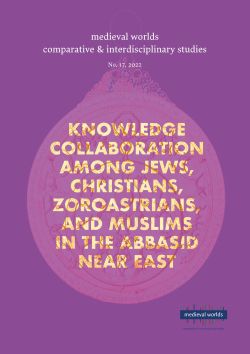Johannes Preiser-Kapeller,
Ewald Kislinger
S. 3 - 58
doi:
10.1553/medievalworlds_no17_2022s3
Verlag der Österreichischen Akademie der Wissenschaften
doi:
10.1553/medievalworlds_no17_2022s3
Abstract:
The blinding of the Byzantine emperor Constantine VI in Constantinople in August 797 and his overthrow by his mother Eirene, who then ruled as the first female »emperor« of the Eastern Roman Empire until 802, was used as legitimation for the coronation of the Frankish king Charlemagne as emperor of the Romans on 25 December 800, by contemporaries in Western Europe. Some observers in the West may have even interpreted the downfall of the Eastern Roman emperor and his replacement by a woman as sign of an impending collapse of the Roman Empire and the entire world order, as already expected (based on chiliastic calculations). We equally find indications of apocalyptic expectations in Constantinople, where Constantineʹs blinding was linked with a spectacular celestial manifestation of divine disapproval – a darkening of the sun for 17 days. In this paper, this obfuscation of the sun is compared with the description of other atmospheric and climatic phenomena in the 8th and 9th centuries, as well as before and after this period. In addition, natural scientific data is used to disprove earlier hypotheses on the physical background to this event and to present a more probable scenario (i.e., the impacts of one or more volcanic eruptions) for the darkening of 797 and other phenomena, which provided a peculiar »atmospheric« framework for the interpretation of the events between the downfall of Constantine VI and the coronation of Charlemagne by contemporaries.
Byzantine history, early medieval history, Carolingian Empire, astronomy, vulcanology, climate history, medieval Mediterranean, moral meteorology
Published Online:
2022/11/30 12:56:02
Object Identifier:
0xc1aa5576 0x003ddac6
Rights:https://creativecommons.org/licenses/by-nc-nd/4.0/
medieval worlds provides a forum for comparative, interdisciplinary and transcultural studies of the Middle Ages. Its aim is to overcome disciplinary boundaries, regional limits and national research traditions in Medieval Studies, to open up new spaces for discussion, and to help developing global perspectives. We focus on the period from c. 400 to 1500 CE but do not stick to rigid periodization.
medieval worlds is open to submissions of broadly comparative studies and matters of global interest, whether in single articles, companion papers, smaller clusters, or special issues on a subject of global/comparative history. We particularly invite studies of wide-ranging connectivity or comparison between different world regions.
Apart from research articles, medieval worlds publishes ongoing debates and project and conference reports on comparative medieval research.
Editorial
Ingrid Hartl and Walter Pohl
»The sun was darkened for seventeen days« (AD 797).
An Interdisciplinary Exploration of Celestial Phenomena between Byzantium, Charlemagne, and a Volcanic Eruption
Johannes Preiser-Kapeller and Ewald Kislinger
Knowledge Collaboration among Jews, Christians, Zoroastrians, and Muslims in the Abbasid Near East
Guest editor: Nathan Gibson
Knowledge Collaboration among Jews, Christians, Zoroastrians, and Muslims in the Abbasid Near East: Introduction
Nathan P. Gibson
Why Muslims Shouldn’t Practice Medicine. The Autobiographical Account of a Frustrated Physician, Ibrahīm al-Qalyūbī (fl. second half 7th/13th)
Ignacio Sánchez
Alī and “Sons of Ādurbādh”: Zoroastrians Priests in the Early Islamic Era
Kayla Dang
On Attributes and Hypostases: Muslim Theology in the Interreligious Writings of Patriarch Timothy I (d. 823)
Joachim Jakob
For the Care of Body and Soul: The Greek Bible and an Arab-Islamic Botanical Text in a 10th-Century Palimpsest Fragment
Matteo Pimpinelli
Interreligious Scholarly Collaboration in Ibn al-Nadīm’s Fihrist
Rémy Gareil
Project Reports
Indexing A Shared Knowledge Culture from Many Perspectives: The Historical Index of the Medieval Middle East (HIMME) as a Tool for Researching Diversity
Thomas A. Carlson and Jessica S. Mutter
Embedding Conquest: Naturalizing Muslim Rule in the Early Islamic Empire (Project Report)
Cecilia Palombo




 Home
Home
 Print
Print
 References
References
 Share
Share
